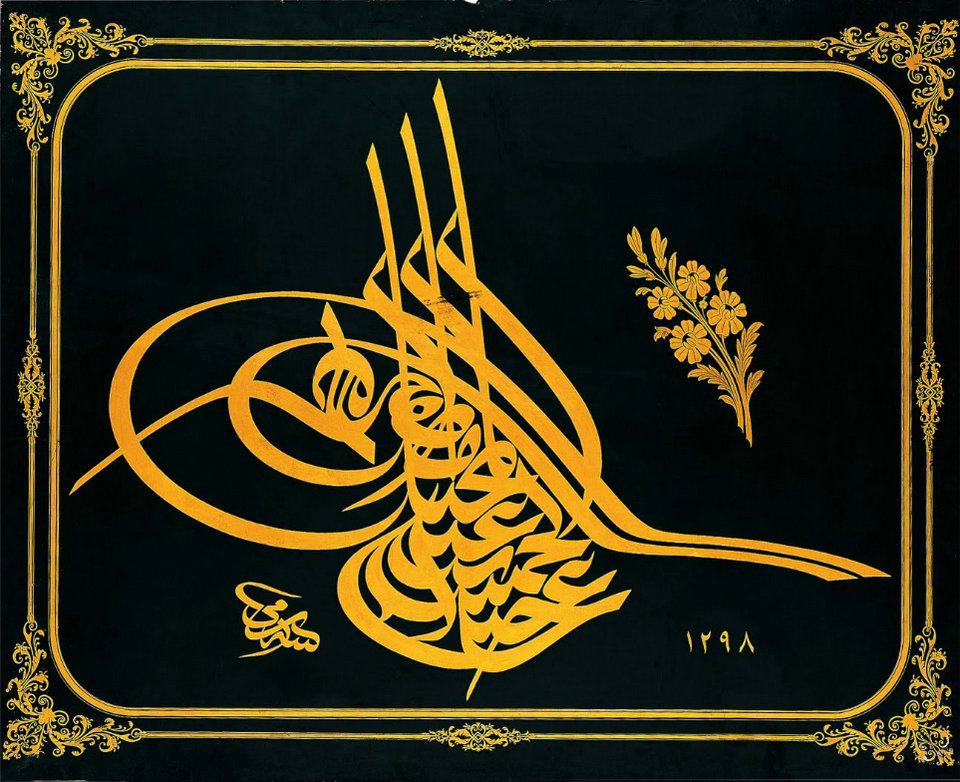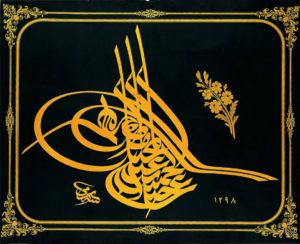Sakıp Sabancı’s collection of calligraphic works by famous calligraphers, Korans and illuminated manuscripts began with the purchase of a levha (calligraphic panel) by Sultan Mahmud II (r. 1808-39). During the 1980s, the Sakıp Sabancı collection expanded with the purchase of private collections, and from 1989 onwards, the collection was exhibited in major museums abroad. The keen interest attracted by these exhibitions cemented Sakıp Sabancı and his family’s resolve to further enlarge the collection and encouraged the idea of founding a museum.
In 1998, the family mansion was bequeathed by the Sabancı family to Sabancı University to be converted to a museum, and in 2002, the Sabancı University Sakıp Sabancı Museum opened to the public. The upper floor rooms of the mansion were transformed into galleries to exhibit Ottoman manuscripts and calligraphic compositions.
Sakıp Sabancı Museum’s Calligraphy and the Arts of the Book Collection consists of illuminated Korans, prayer books, calligraphic albums and panels with Koranic verses, hadith and aphorisms, and illuminated documents bearing the tuğra (imperial cipher) of the Ottoman sultans.
Sakıp Sabancı
Sakıp Sabancı (7 April 1933 – 10 April 2004) was a prominent Turkish business tycoon and philanthropist.
Born as the second son of a cotton trader, he worked in all the ranks of his father’s business without completing high school. He was the head of Turkey’s largest business conglomerate and 147th richest man on the Forbes list of the world’s top billionaires in 2004. Sakıp Sabancı described himself as such: “I get angry when someone calls me only rich; I am happy with my social personality and my generosity.”
Sabancı was among the most colorful personalities in the Turkish business world. After taking over the family business, with his energy, initiative and courage alongside the assistance of his brothers, he carried the Sabancı Group among the world’s top companies starting in the 1980s. In fact, from its very beginning Sakip Sabanci, and his brothers engaged in international business. The first business relations that Sakip Sabanci had with other firms started with his father, Hacı Ömer Sabancı, who exported cotton from Adana and needed machinery to create finished goods. Sabanci had textile goods sent to both Italy and Germany for printing in the 1970s. Sakip Sabanci developed many international business contacts through his work with trade delegations sent from Turkey to other countries such as the United States.
Today, the Sabanci Group of Companies operates in eighteen different countries. The organization also markets its products in many regions of the world including North and South America, North Africa, the Middle East and Europe. The Sabanci Group retains its strong reputation and image that was mostly established by Sakip Sabanci, and has continued to engage in numerous joint ventures as a means of extending its operations on a global level. Currently, Sabancı Holding controls more than 60 companies, which are involved in textiles, tourism, automotives, chemicals, tobacco, cement, insurance and banking. The group also has partnerships with some of the well-known multinational companies, such as Hilton Group, Bridgestone, Du Pont, Philip Morris, Bekaert, Heidelberg Cement, IBM, BNP Paribas, Dresdner Bank, Carrefour and International Paper. Sabancı Holding, and ten other companies within the group are listed on the Istanbul Stock Exchange. In 2011, the consolidated revenue of the company was $13.4 billion. The Sabanci Family is the majority shareholders of Sabanci Holdings with a 60.6% share of the firm.
Some of Sakip Sabanci’s greatest contributions were to education and arts in Turkey. Sabancı family founded the charitable Sabanci foundation in 1974, which runs more than 120 health, education and cultural centers throughout Turkey. Sakip Sabanci founded the Sabancı University in 1999. His collections of more than 320 Ottoman and Turkish paintings, statues and more than 400 examples of Ottoman calligraphy are exhibited at Atlı Köşk (The Equestrian Villa) at Bosporus in Emirgan, Istanbul, where he and his family lived for years, and which was converted into the Sakıp Sabancı Museum in 2002.
Sabancı was a humorous, folksy figure, who loved the media limelight and rejoiced in being known as “Sakıp Ağa”.
He died of kidney cancer at the age of 71. Sabancı was honored with an unusual state funeral and was laid to rest at the Zincirlikuyu Cemetery. He is survived by his wife, Türkan, his son Metin, two daughters Dilek and Sevil and a granddaughter Melissa.
Sakıp Sabancı Museum
Sabancı University’s Sakıp Sabancı Museum is located in Emirgan, at one of Istanbul’s oldest settlements on the Bosphorus.
In 1925, Prince Mehmed Ali Hasan of the Hidiv family of Egypt commissioned the Italian architect Edouard De Nari to build the villa, now the museum’s main building, and it was used as a summer house for many years by various members of the Hidiv family.
After the mansion was purchased in 1951 by industrialist Hacı Ömer Sabancı from the Hidiv family as a summer residence, it came to be known as Atlı Köşk, “The Mansion with the Horse”, because of the statue of a horse (purchased in the same year) that was installed in the garden; the statue is the 1864 work of the French sculptor Louis Doumas.
A second horse sculpture on the grounds of Atlı Köşk that gave the mansion its name is the cast of one of the four horses taken from Sultanahmet square in Istanbul when it was looted by Crusaders during the Fourth Crusade in 1204 and removed to the Basilica of San Marco in Venice.
After the death of Hacı Ömer Sabancı in 1966, Atlı Köşk began to be used permanently as a home by Sakıp Sabancı in 1974 as the eldest of the family, and for many years housed Sakıp Sabancı’s rich collection of calligraphy and paintings. In 1998, together with its collection and furnishings, the mansion was bequeathed to Sabancı University by the Sabancı family to be transformed into a museum.
With the annex of a modern gallery, the exhibition areas of the museum opened to visitors in 2002; with a further extension of the layout in 2005, the technical level of the museum reached international standards.
Today Sabancı University Sakıp Sabancı Museum presents a versatile museological environment with its rich permanent collection, the comprehensive temporary exhibitions that it hosts, its conservation units, model educational programs and the various concerts, conferences and seminars held there.



